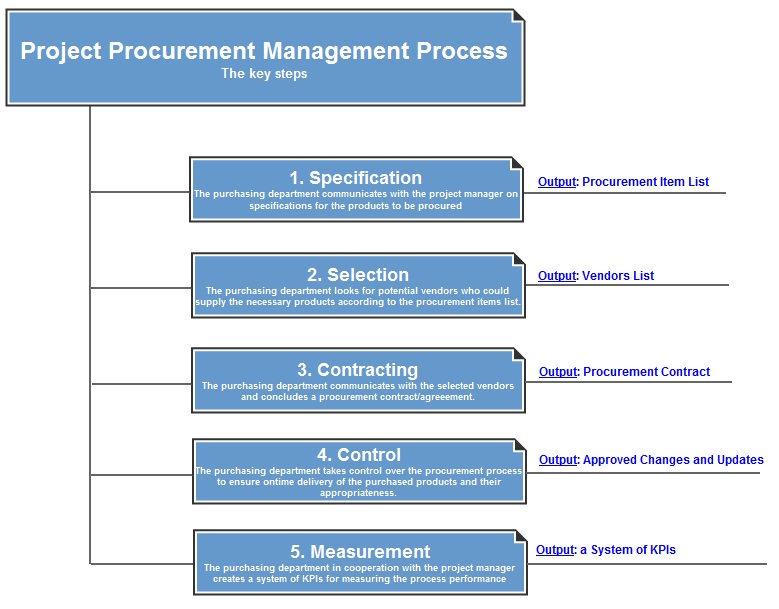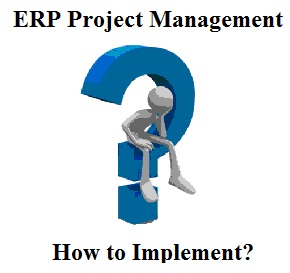How to Estimate Project Costs and Prevent Overspending

Accurate cost estimation and budgeting are mission-critical to project success. It is vital to estimate the costs of a project to set spending levels, determine resource needs, and avoid overspending.
In project management, cost estimation and budgeting define the process of determining the monetary value of work, technology, materials, and resources required to complete a project and planning for ways to finance it. Specifically, this unified process aims to estimate the costs needed to implement a proposed project and find ways to cover those expenses, which is why it is important to have the right tools available. For example, painting estimate software will allow you to create estimations for a painting project by inputting variables such as square footage, materials needed, and labor costs. This can help project managers accurately forecast expenses and allocate resources efficiently.
In this guide, we will walk through the definition of cost estimation and budgeting in project management and describe the critical steps for creating cost estimates and the project budget, taking into account the many factors affecting how much to spend and how much risk to accept.
What are Cost Estimation and Budgeting?
Both are separate processes yet come as one in project cost management.
Cost estimation (often referred to as forecasting) is the process of determining an approximate amount of expenses associated with a proposed project, usually for planning and control. For example, in a business setting, cost estimation produces calculations and projections on what it will cost to deliver a project and how much resources should be spent on each department or team within the organization.
Budgeting is the process of planning and controlling project expenses by developing a formal budget sheet, a set of detailed spending plans created due to cost forecasting. In other words, budgeting helps prioritize and allocate funds to meet cost projections while accounting for the uncertainty in all estimates.
For example, if a project requires $1 million to complete, the resulting budget will lay out how this money will be spent across all phases of the project, from planning to execution to launch and beyond. Sometimes, it can list the financial risks and projections, or contingency funds, should things go wrong.
What is Project Cost Management?
To understand the benefits of project cost management, you first need to understand the processes involved in estimating a project’s costs. As mentioned, ensuring your project has the correct estimate is vital for having suitable materials and team members in place.
Project cost management refers to the process of estimating the expenses that a project will require and then making sure you have enough money available to cover those expenses at any point during the project.
In short, if you’re running a project, you’ll want to cover all of your expenses, from the seed money required to pay for the initial materials, staffing, and technology to any last-minute purchases that will become necessary. This ensures that your project’s costs stay within your initial budget.
Effective project cost management allows each project to be specific and unique because that project entails costs and requires particular funding. However, no matter whether you lead a software development (IT outsourcing) or construction project (construction project management software), you should consider project cost management as a process that consists of the three key steps (get more info at the PM Guidelines).
Why Is It Necessary for Project Success?
A project’s success depends on accurately estimating costs and allocating resources. If expenses are underestimated, the project can run out of money before completion. At the same time, if they are overestimated, extra costs will be spent, which cannot be used on other projects throughout the organization.
Additionally, projects with too much budget can be wasteful by hiring teams and individuals who do not contribute to the project’s success. Conversely, the proposed work will not be completed as intended with too little money in the budget.
Keep in mind project costs typically fall into four categories:
- Direct costs: materials, equipment, personnel and services needed to complete the project as intended in the original plan. For example, direct costs can be associated with staffing a department with qualified individuals or purchasing tools to support work on a new product line.
- Indirect costs: Costs not associated with the production of a project deliverable or activity. For example, indirect costs might include paying for the heating and cooling of an office building or providing insurance coverage for employees.
- Overhead costs: Costs that are indirectly associated with the production of a product or the completion of an activity. For example, overhead costs might include paying for general firm expenses such as rent, utilities, and other recurring costs.
- Contingency funds: Funds allocated as a financial buffer or reserve to cover the cost of potential risks or unplanned changes. For example, if a project’s expenses are underestimated, and there needs to be more money to complete work as planned, the project manager may have to cover the cost out of pocket or seek additional funding.
Project Cost Estimating Process
The process of cost estimation begins with data collection. The project manager or the business analyst should start by thoroughly assessing the work to be completed, including reviewing the requirements and scoping documents. Next, they should identify all cost factors associated with completing the project. Finally, they must determine how much each cost factor will add to overall expenses.
How to Estimate Project Costs in Five Steps
In a nutshell, the next five steps outline a cost estimation process in projects:
- Collect data on the project stakeholders and their requirements
- Determine the project scope by identifying what work is to be conducted.
- Calculate labor, materials, equipment, and overhead expenses.
- Estimate contingency funds and management reserves. If risk analysis is conducted, you may want to add an extra percentage of funds to account for the probability of unexpected expenditures.
- Sum all the costs together to create the total cost estimate.
In the real world, there is no such thing as a perfect or definitive cost estimate. Moreover, due to the complexity of an organization’s processes and procedures, some areas may be more prone to error than others.
For example, expenses in finance are highly scrutinized compared to other departments. With this in mind, some organizations may opt to work with a third-party consultant for assistance with the estimation process.
Work Breakdown Structure (WBS) for Cost Estimation
A WBS is a hierarchical breakdown of a project by activities, tasks, and deliverables. Estimations are made by assigning resources, cost, and time to each WBS level and making projections. This method calculates total expenses, including costs at completion and even the overall timeline for each activity.
For example, a company wants to build a new factory to produce a new product. The project manager would break down the deliverables into activities and tasks, or work packages. This executive would then assign resources, cost, and time to each WBS level. At the end of this process, the project manager might see that it would take 12 months for the activities and tasks to be completed. The cost to complete this project is approximately $50,000, for example.
The WBS is a comprehensive method for cost estimation, and it allows for adjustments if circumstances change or new data is discovered.
Gantt Chart for Cost Estimates
Many organizations use the Gantt chart template to show progress toward achieving their goals. The Gantt chart can also be used to help estimate project costs. The Gantt chart is a bar chart that depicts activities in sequential order, such as starting a project on January 1, making it easier to track where work begins and ends.
Many project management software tools, such as Monday and Wrike, offer built-in Gantt chart templates and features that calculate a project’s overall costs. In addition, many of them include features that allow you to determine how much time each task will take and how you can assess the tasks’ costs.
For instance, Microsoft Project can be used to estimate the costs of different projects and products. This calculator will calculate how many work hours will be spent on each task and how much it will cost the company. In addition, the Gantt Chart template in this software shows how each day and week proceeds and how much time is left before the project is completed.
Dealing with Uncertainty and Risk in Cost Estimation
Many projects are affected by uncertainty, and the costs involved in managing, assessing, and planning for uncertainty are significant.
Cost estimates may be regarded as a single figure, yet there is no such thing as an accurate forecast because of the effect that risk has on a project.
Risk is unavoidable, and to make sure that risks are being accounted for, organizations should use a variety of methods.
Just-in-time Cost Forecasting
This method allows a project manager to focus on the more critical and high-risk areas of a project. This reduces the amount of work needed to revise cost estimates. It also makes it easier to allocate resources while meeting deadlines.
Waterfall Approach
This model is widely used because of its advantages. However, delivering a project on time is more expensive and less likely. This method involves ending the project when all its activities are completed, even over budget. Therefore, this model focuses more on a project’s milestones than cost predictions.
Agile Development
This method is used for managing uncertainty and risk, but it does not emphasize final deadlines and requires teamwork to achieve success. It is often used for large, complex IT and software development projects.
How to Update Project Cost Estimates
During the project execution process, as different information and knowledge become available to the stakeholders and project manager, so does the updated cost estimate.
There are several ways to update and revise project cost estimates:
- Reviewing the scope, process, and resource requirements. For example, the cost will be affected if a new technology is adopted. In addition, as new information becomes available to decision-makers, the forecasts may need to be adjusted.
- Performing risk analysis. For example, there is a high-cost risk of a supplier not delivering materials on time. This may increase the cost of production, which should be factored in accordingly.
- Forecasting on a regular basis. Project costs can be constantly reviewed based on the work done, time spent, and completion date. For some projects, a monthly or quarterly forecast will be sufficient.
- Using Value Engineering. This approach involves systematically improving products and services by analyzing their components and identifying opportunities for reducing costs and waste.
Key Takeaways:
- Crucial for Project Success: Accurate cost estimation and budgeting are vital for managing resources and avoiding overspending.
- Strategic Planning Required: Involves forecasting costs, creating budgets, and incorporating risk management to ensure financial control.
- Tools and Techniques: Utilizing Work Breakdown Structures (WBS) and Gantt charts aids in detailed cost estimation and project tracking.
- Managing Risks and Updates: Employing strategies like Agile development and regular project reviews helps manage uncertainties and keep cost estimates up to date.














